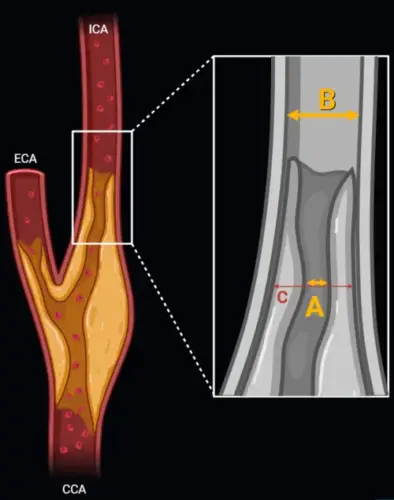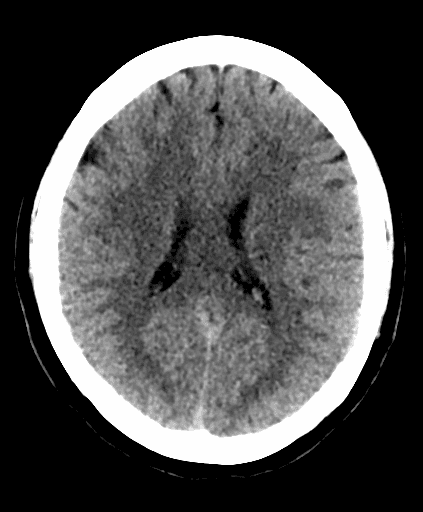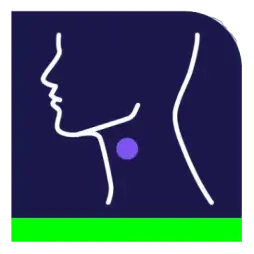NASCET Calculator for CTA & MRA + Report Generator

References:
- North American Symptomatic Carotid Endarterectomy Trial Collaborators, Barnett, H. J. M., Taylor, D. W., Haynes, R. B., Sackett, D. L., Peerless, S. J., Ferguson, G. G., Fox, A. J., Rankin, R. N., Hachinski, V. C., Wiebers, D. O., & Eliasziw, M. (1991). Beneficial effect of carotid endarterectomy in symptomatic patients with high-grade carotid stenosis. The New England journal of medicine, 325(7), 445–453. https://doi.org/10.1056/NEJM199108153250701
- Randomised trial of endarterectomy for recently symptomatic carotid stenosis: final results of the MRC European Carotid Surgery Trial (ECST). (1998). Lancet (London, England), 351(9113), 1379–1387.
Related Calculators:
More About the ECST & NASCET Calculator
Understanding the Origins: NASCET and ECST Trials
The North American Symptomatic Carotid Endarterectomy Trial (NASCET) and the European Carotid Surgery Trial (ECST) are foundational studies that have shaped modern carotid artery disease management. Both trials were conducted during a time when the role of surgery in preventing stroke was under intense scrutiny. Through rigorous design and long-term follow-up, these studies provided definitive evidence supporting carotid endarterectomy (CEA) for select patients, and they continue to influence guidelines to this day.
NASCET, primarily conducted across North America, emphasized high-quality imaging and strict inclusion criteria. The trial enrolled patients with recent symptoms of cerebral ischemia and carefully graded internal carotid artery (ICA) stenosis using angiographic criteria. ECST, conducted in Europe, used a slightly different measurement method, focusing more on estimated original arterial lumen size. Despite methodological differences, both trials reached similar conclusions: surgical intervention is beneficial for patients with high-grade symptomatic carotid stenosis.
These trials have not only guided surgical thresholds but have also laid the groundwork for how clinicians communicate imaging findings. By offering a reliable, evidence-based grading scale, the NASCET and ECST calculators serve as indispensable tools in patient assessment, allowing practitioners to contextualize stenosis severity within a validated clinical framework.
The NASCET Method: A Landmark in Stroke Prevention
The NASCET method revolutionized the assessment of carotid artery disease. The study involved over 600 patients with symptomatic ICA stenosis of 70% or greater and demonstrated that CEA could significantly reduce stroke incidence. The trial’s two-year follow-up showed a 17% absolute risk reduction in ipsilateral strokes, with the surgical group experiencing only a 9% event rate compared to 26% in the medically managed cohort.
Importantly, NASCET stratified patients based on degree of stenosis. While high-grade (≥70%) stenosis showed the most pronounced benefit, moderate stenosis (50–69%) was also associated with reduced risk, though the benefit was more modest and patient selection became paramount.
The hallmark of the NASCET method is its formula:
Stenosis (%) = [1 - (narrowest diameter / distal ICA diameter)] × 100
This calculation uses the diameter of the distal internal carotid artery—well beyond the stenotic region—as the reference, minimizing variability caused by the bulb or plaque eccentricity. The method’s reproducibility has made it the standard in most radiology reports and vascular guidelines, and it is compatible with DSA, CTA, and MRA modalities.
Today, the NASCET formula is not just a research legacy—it is clinical routine. It provides a common language for neurologists, radiologists, and surgeons, facilitating collaborative care in stroke prevention.
The ECST Method: European Standards and Comparison
The ECST trial similarly confirmed the benefits of surgical intervention in patients with high-grade symptomatic ICA stenosis. However, its approach to quantifying stenosis differed. ECST calculated percent stenosis by comparing the narrowest lumen to the estimated original diameter of the artery at the site of the lesion—essentially reconstructing what the artery "should have been" without disease. This often yields a higher percentage than NASCET for the same lesion.
For instance, a lesion that appears 70% stenotic by ECST criteria might correspond to approximately 50% stenosis under the NASCET method. This discrepancy has important implications for clinical decision-making, especially when trial eligibility or treatment thresholds are based on a specific grading system. For this reason, converting ECST values to NASCET equivalents—or vice versa—can be crucial in international studies or cross-border collaborations.
Both trials emphasize the need for accurate and consistent imaging interpretation. The ECST methodology may be less commonly used in modern radiology but remains relevant in historical datasets and European clinical practice. Its inclusion in this calculator helps clinicians understand comparative values and align their reports with the appropriate clinical context.
Why a NASCET Calculator Matters in Clinical Practice
In today’s fast-paced clinical environment, a well-designed NASCET calculator offers speed, precision, and consistency. Whether used in an emergency room evaluating an acute stroke or in an outpatient clinic managing chronic cerebrovascular risk, this tool provides objective data that can shape the course of treatment.
Its value goes beyond the initial measurement:
- Clinical Consistency: Enables radiologists and neurologists to speak the same diagnostic language, reducing ambiguity and improving patient handoffs.
- Workflow Optimization: Integrates seamlessly into imaging protocols and structured reporting formats, facilitating reproducible assessments without requiring manual calculations.
- Decision Support: Supports evidence-based triage for surgical versus medical management, especially when dealing with borderline or moderate lesions.
- Educational Utility: Serves as a teaching tool for trainees learning how to assess vascular imaging, emphasizing the importance of measurement technique and anatomy.
- Cross-specialty Relevance: Equally useful for neurology, vascular surgery, and interventional radiology teams evaluating both endarterectomy and stenting options.
How to Use the NASCET Calculator Effectively
To achieve accurate results with the NASCET calculator, users must adhere to precise measurement protocols:
- Identify the narrowest diameter of the ICA at the point of maximal luminal narrowing.
- Measure the normal distal ICA diameter approximately 1–2 cm beyond the carotid bulb, where the vessel has a uniform caliber and is free of disease.
These measurements should be performed on high-resolution cross-sectional imaging, preferably with reformatted sagittal or oblique views. Artifacts, calcifications, and eccentric plaques can complicate the interpretation—so using multiple planes and contrast-enhanced images is essential.
Special care should be taken when using MRA, where flow-related artifacts may overestimate or underestimate stenosis. CTA provides excellent spatial resolution, and DSA remains the gold standard in difficult or equivocal cases. The calculator is only as accurate as the input, so measurement diligence is critical.
Clinical Applications Beyond Surgery
Although originally designed to stratify candidates for carotid endarterectomy, the NASCET method is now foundational to many aspects of cerebrovascular care. In recent years, the rise of carotid artery stenting (CAS) has expanded its role. High surgical risk patients, those with hostile neck anatomy, or individuals who prefer less invasive procedures are increasingly considered for CAS, and accurate stenosis measurement remains the key eligibility criterion.
Moreover, the NASCET percentage is often used to:
- Guide medical management decisions, including the intensity of antiplatelet therapy and statin use.
- Determine follow-up imaging intervals in patients with moderate or borderline stenosis.
- Stratify stroke risk in multi-infarct dementia or embolic stroke of undetermined source (ESUS) workups.
- Support enrollment in clinical trials testing new interventions or risk stratification algorithms.
Thus, the NASCET calculator serves both as a point-of-care tool and a longitudinal metric in the continuum of stroke care.
Limitations and Nuanced Interpretation
Despite its utility, the NASCET method has limitations. First, it assumes a normal distal reference artery, which may not always be available or disease-free. In patients with diffuse atherosclerosis, selecting an appropriate reference diameter can be challenging. Overestimation or underestimation of stenosis can lead to misclassification and inappropriate treatment.
Second, percent stenosis alone does not capture other high-risk features such as:
- Plaque morphology: Ulcerated or hemorrhagic plaques may confer greater embolic risk even at moderate stenosis levels.
- Intraluminal thrombus: May signal plaque instability, warranting more urgent intervention.
- Flow characteristics: Some patients may demonstrate poor perfusion despite non-critical narrowing due to poor collateralization.
Additionally, individual patient factors—such as advanced age, cardiac comorbidities, and anticoagulation needs—must be considered when determining the appropriateness of surgery or stenting.
Final Thoughts: Integrating Evidence into Everyday Care
The NASCET calculator remains a cornerstone of modern stroke prevention. It offers a practical means to translate decades of research into real-time clinical decisions. By integrating reproducible measurements with clinical insight, the tool enhances care planning and fosters communication between specialties.
As guidelines evolve and imaging technologies advance, the foundational principles of NASCET and ECST continue to be relevant. Whether evaluating a symptomatic patient in the ED or tracking asymptomatic stenosis over time, using a validated calculator helps ensure evidence-based, patient-centered care.
Frequently Asked Questions (FAQ)
- What do NASCET and ECST stand for?
NASCET stands for the North American Symptomatic Carotid Endarterectomy Trial, and ECST stands for the European Carotid Surgery Trial. Both landmark studies established how carotid artery stenosis should be measured and treated. - Why do NASCET and ECST give different stenosis percentages?
They use different reference points. NASCET compares the narrowest lumen to the normal distal ICA, while ECST estimates the artery’s original size at the lesion. ECST values tend to appear higher for the same lesion. - Which method should I use in clinical reporting?
Most modern radiology and vascular guidelines, including those from the AHA and ESVS, use NASCET. ECST remains useful for interpreting older data or European-based research. - How accurate are NASCET measurements on CTA or MRA?
CTA provides excellent spatial resolution and is well-suited for NASCET calculations. MRA can be accurate too, but flow artifacts may sometimes affect measurements. DSA remains the gold standard when precision is critical. - Does percent stenosis alone determine treatment?
No. Clinical symptoms, plaque features, and patient risk factors all play roles. Percent stenosis helps guide management but isn’t the sole determinant for surgery or stenting. - Can this calculator be used for asymptomatic patients?
Yes, but results should be interpreted carefully. Guidelines differ for symptomatic and asymptomatic disease, and intervention thresholds are typically higher for the latter. - Is there a conversion between ECST and NASCET values?
Approximate conversions exist, but results vary by vessel geometry. Roughly, an ECST 70% stenosis often equals about 50% by NASCET criteria. Always reference the grading system used in the clinical context. - What’s the main advantage of using a NASCET calculator?
It standardizes measurements, reduces variability, and ensures your report aligns with major stroke-prevention trials and guideline criteria.






this was the best nascet calculator that i saw but no longer works. not showing the % stenosis. shame
Thank you for your feedback. Over the past few days, we have encountered occasional and temporary issues due to the relocation and upgrade of our servers. I expect the website to stabilize within a day or two. Thank you for your patience.
glad to see it back up and running. the other calculators were okay but you have to click calculate instead of doing it automatically